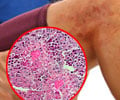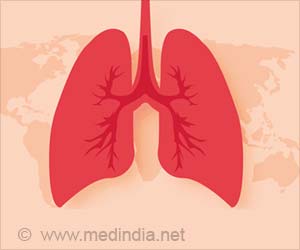The Washington, Weill Cornell Medical College, research studies confirm that the key factor in the tightening of airways, a trademark of asthma is due to an enzyme called renin released by mast cells in the lungs.
The tem of researchers led by Dr. Arul Veerappan have explained that when an immune response takes place, mast cells release renin, which in turn produces angiotensin—a powerful constrictor of the smooth muscle that lines airways.Normally, mast cells are present in small numbers in all organs, and are known for their role in allergy, shock, wound healing and defense against pathogens.
"Back in 2005, our team was the first to discover that mast cells in the heart released renin locally, which elicited heart arrhythmias by triggering angiotensin production within the heart. Now, we've expanded those findings to the lungs, where similar mechanisms appear to work locally to help trigger constriction in the airway," explained Dr. Roberto Levi, professor of pharmacology at Weill Cornell Medical College.
Renin is long known to be produced by the kidney in relatively large quantities for systemic use throughout the body. However, the Weill Cornell team was the first to find that mast cells had their own "local" supply of the enzyme, at a variety of body sites.
"In the heart and now the lungs, this localized production of renin appears to have a profound effect on nearby tissues. More study is needed, of course, but our finding suggests that drugs that target renin might prove effective agents in dampening asthma or other respiratory diseases. These types of 'renin inhibitors' are, in fact, currently being developed by the pharmaceutical industry right now," said Dr. Randi Silver, associate professor of physiology and biophysics at Weill Cornell.
Arul Veerappan, who is now a postdoctoral researcher in Dr. Silver's laboratory, looked closely at rings of bronchial tissue from rodents, and found that mast cells in these rings released renin along with other substances.
Advertisement
Another research led by co-author Alicia Reid, also a postdoctoral associate in Dr. Silver's lab, made another first of its kind development.
Advertisement
"That's a big achievement, because it supports the notion that the mechanism we have discovered is not just a laboratory phenomenon — it's actually occurring in the living human lung," noted Dr. Levi.
This new research indicated that local renin production may also be crucial in diseases marked by tissue fibrosis (stiffening). Also, Dr. Silver's lab is now studying the role played by locally produced renin, in a rare, deadly illness called idiopathic pulmonary fibrosis (IPF), where lung tissue becomes increasingly inflexible over time.
"We're interested in any disease in which we can also detect local renin/angiotensin production because it appears to be linked to fibrosis, vasoconstriction, and now bronchoconstriction," explained Dr. Silver.
All this research was aimed at finding new treatment targets for a range of illnesses.
"Of course, we already have antihypertensive medicines — such as ACE inhibitors and angiotensin receptor blockers -- that focus on curbing angiotensin in a more systemic way. But if we could find agents that dampen this renin-angiotensin cascade locally — in the heart or the lung, for example — that could prove to be a formidable new weapon against disease," said Dr. Levi.
Source-ANI
SPH/M











